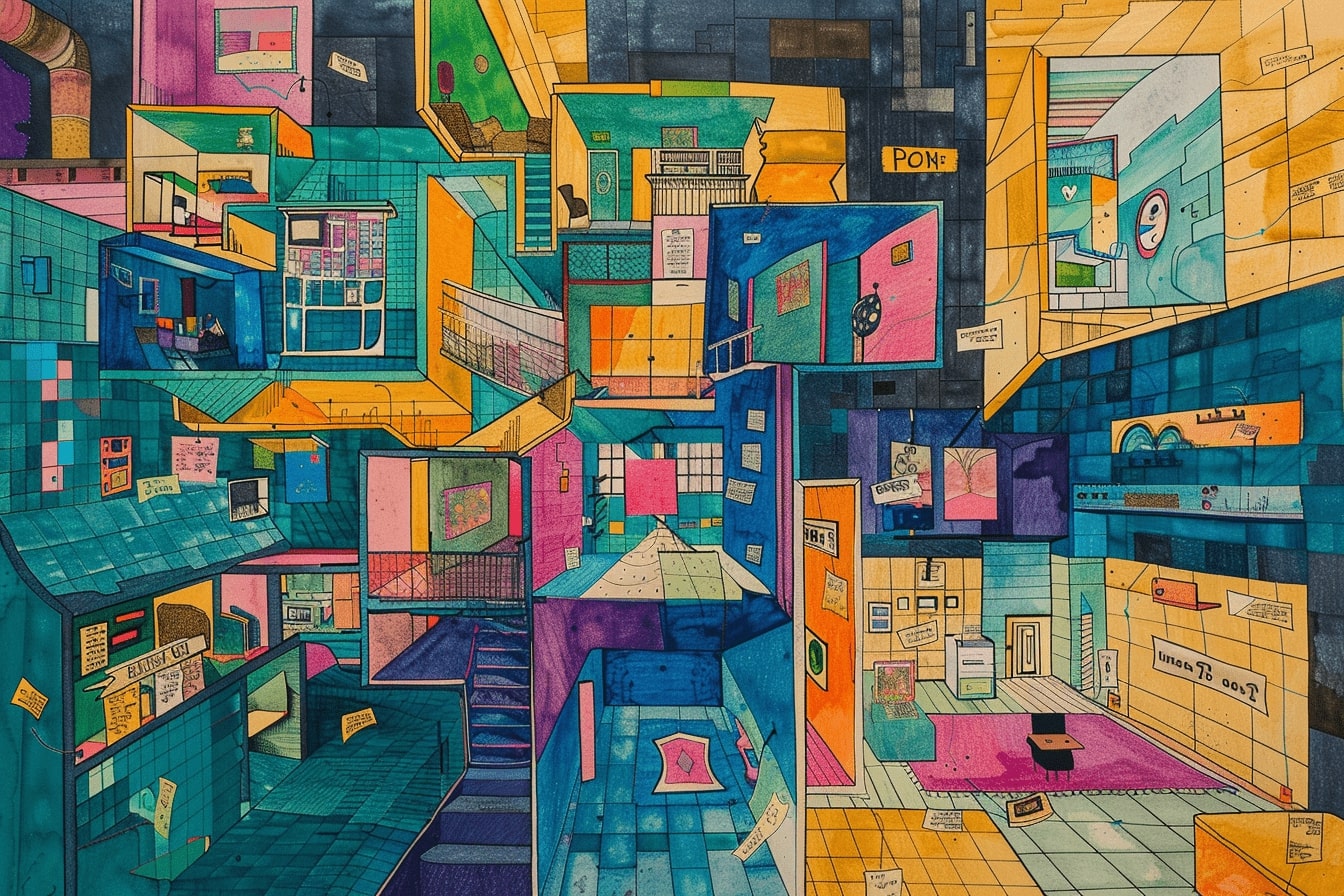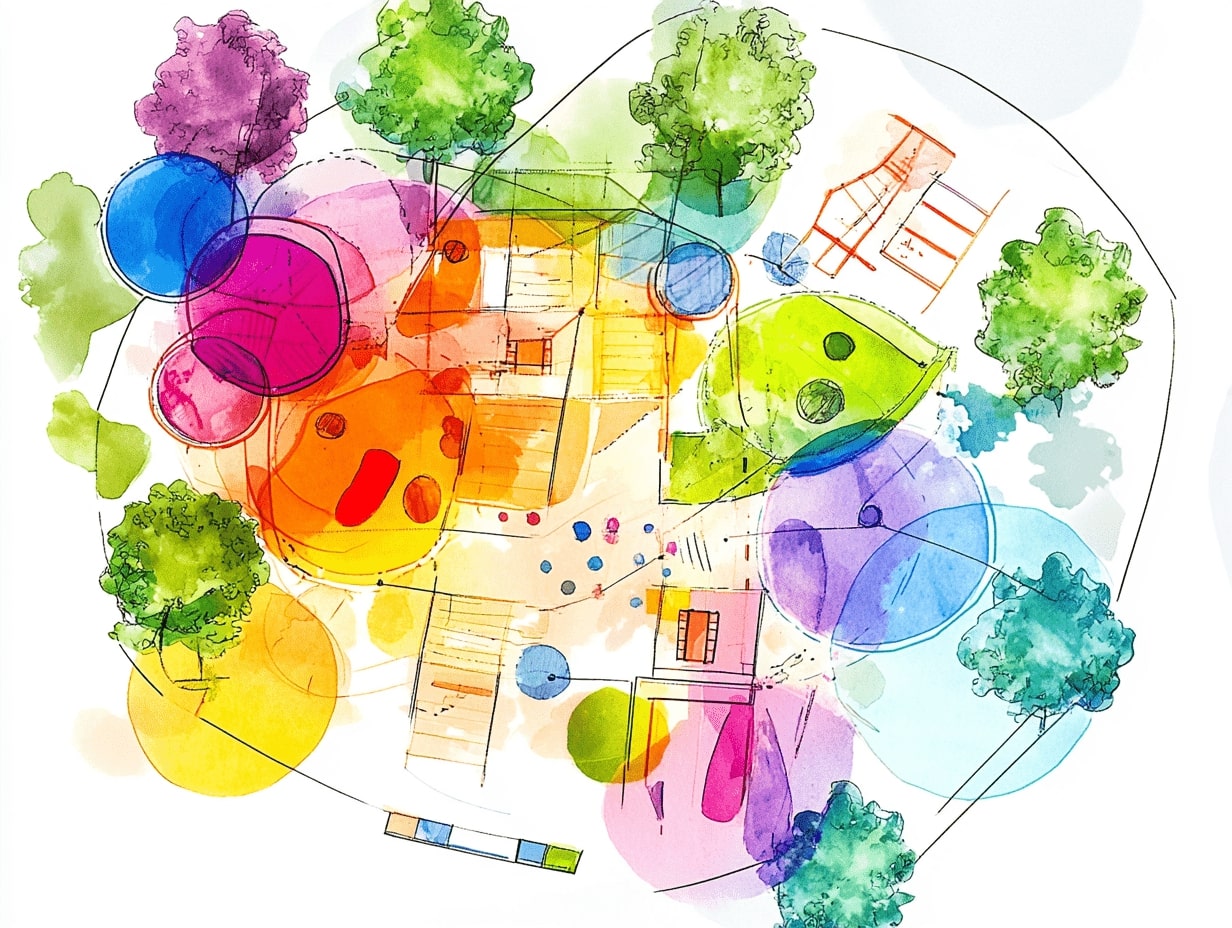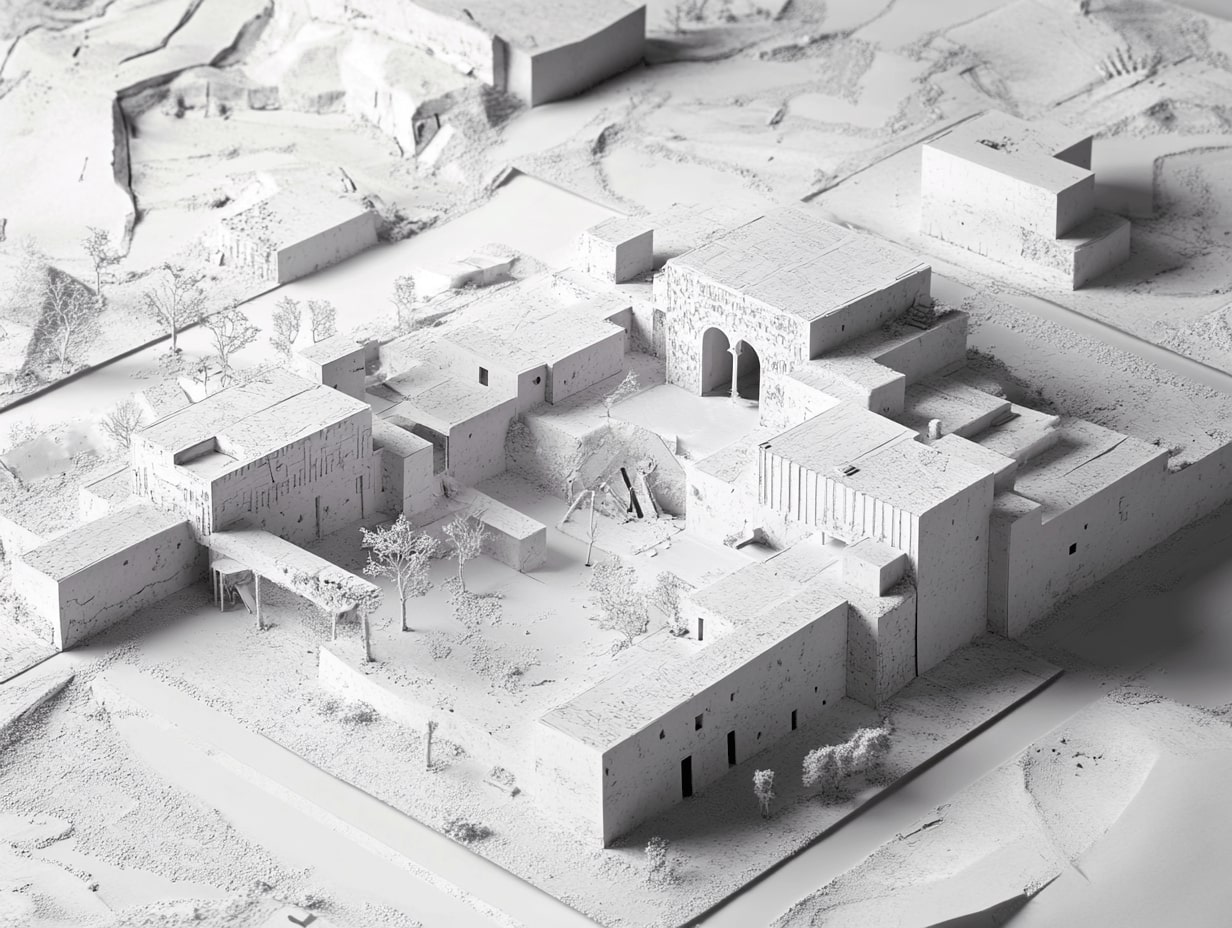- Home
- Articles
- Architectural Portfolio
- Architectral Presentation
- Inspirational Stories
- Architecture News
- Visualization
- BIM Industry
- Facade Design
- Parametric Design
- Career
- Landscape Architecture
- Construction
- Artificial Intelligence
- Sketching
- Design Softwares
- Diagrams
- Writing
- Architectural Tips
- Sustainability
- Courses
- Concept
- Technology
- History & Heritage
- Future of Architecture
- Guides & How-To
- Art & Culture
- Projects
- Interior Design
- Competitions
- Jobs
- Store
- Tools
- More
- Home
- Articles
- Architectural Portfolio
- Architectral Presentation
- Inspirational Stories
- Architecture News
- Visualization
- BIM Industry
- Facade Design
- Parametric Design
- Career
- Landscape Architecture
- Construction
- Artificial Intelligence
- Sketching
- Design Softwares
- Diagrams
- Writing
- Architectural Tips
- Sustainability
- Courses
- Concept
- Technology
- History & Heritage
- Future of Architecture
- Guides & How-To
- Art & Culture
- Projects
- Interior Design
- Competitions
- Jobs
- Store
- Tools
- More
Exploring Architectural Parti Diagrams: Essence and Evolution
In the world of architectural design, the term "parti diagram" often surfaces, sparking curiosity among many. It's a concept rooted deeply in the tradition of architecture education, especially prominent in the United States. Originating from the prestigious corridors of the Ecole Des Beaux Arts in France, the term "parti" refers to the core idea or the main concept behind an architectural design.

In the world of architectural design, the term “parti diagram” often surfaces, sparking curiosity among many. It’s a concept rooted deeply in the tradition of architecture education, especially prominent in the United States. Originating from the prestigious corridors of the Ecole Des Beaux Arts in France, the term “parti” refers to the core idea or the main concept behind an architectural design. It’s the organizing principle that breathes life into a structure, represented through a clear and simple set of diagrams. These diagrams aren’t just drawings; they’re a designer’s way of thinking aloud, a visual language that conveys the essence of their vision.
Understanding architectural parti diagrams is crucial for anyone delving into the architectural design process. These diagrams serve as the foundation for more complex representations, guiding architects through the schematic design phase. They encapsulate the overall design concept, linking it loosely to the spaces, forms, and functions it will eventually embody. Through effective visual communication, parti diagrams illustrate the big idea, ensuring that the essence of the architectural design is comprehensible and compelling. As we explore the intricacies of architectural parti diagrams, we’ll uncover how they’re not just about drawing lines but about narrating the story of a building’s soul.

Table of Contents
ToggleUnderstanding Architectural Parti Diagrams
The Definition and Origin of Parti
At its core, a parti diagram is a simple, schematic drawing used by architects to communicate the essential aspects of their design philosophy for a building. The concept of the parti plays a pivotal role in architectural design, tracing its roots back to the prestigious Ecole Des Beaux Arts in France. The term “parti” stems from the French phrase “parti pris,” translating to “a decision taken.” Essentially, it encapsulates the main idea or the guiding principle behind an architectural design, serving as the foundation upon which all further design decisions are based. These diagrams are not merely artistic sketches; they are the visual embodiment of an architectural concept, eloquently conveying the essence of a building’s design through abstract representation.
The Role of Parti in Architectural Design
The importance of the parti in architectural design cannot be overstated. It acts as the nucleus of the entire project, guiding both the conceptualization and execution of the design. By simplifying complex ideas into digestible, visual forms, parti diagrams facilitate clear communication between architects and their clients, collaborators, and the construction team. This clarity ensures that the fundamental design concept is understood, appreciated, and implemented consistently throughout the project lifecycle. In the schematic design phase, these diagrams serve as a reference point, helping architects explore spatial relationships, scale, and form. Moreover, they enable designers to experiment with different configurations and orientations, ensuring the final structure aligns with the intended design narrative. Ultimately, mastering the art of creating effective parti diagrams is crucial for architects as these drawings bridge the gap between abstract concepts and concrete reality, laying the groundwork for impactful, cohesive architectural works.
The Importance of Architectural Parti Diagrams
Visualization of Core Concepts
Visualizing core concepts becomes seamless with architectural parti diagrams. These tools transform abstract ideas into tangible visuals, making it easier for us to explore spatial relationships, scale, and forms at the early stages of design. Architectural parti diagrams act as a bridge, connecting the initial spark of creativity with the concrete aspects of architectural design. They ensure that the essence of the building aligns perfectly with our intended design narrative. By simplifying complex concepts through clear visual language, these diagrams allow us to maintain the conceptual integrity of the project throughout its development.

Communication with Stakeholders
Effective communication with stakeholders is pivotal in the architecture field, and parti diagrams excel in this aspect. These diagrams serve as a universal language that translates our architectural vision into a format that clients, construction teams, and other stakeholders can easily understand. Without needing in-depth architectural knowledge, clients grasp the overarching concept behind a project, which fosters a transparent dialogue from the onset. Moreover, parti diagrams enable us to convey ideas succinctly during design reviews at university or competitions, ensuring our design intent is comprehended and appreciated by a diverse audience.
Guiding the Design Process
Architectural parti diagrams play a crucial role in guiding the design process. By establishing a clear framework early on, these diagrams inform all subsequent design decisions, ensuring coherence throughout the project’s evolution. They allow us to experiment with different configurations and spatial arrangements while staying true to the original concept. This focused approach streamlines the design process, making it more efficient and preventing deviations from the core idea. As we navigate through the complexities of architectural design, parti diagrams keep us anchored to our foundational principles, ensuring the end result resonates with our initial vision.
Common Types of Parti Diagrams
In our exploration of architectural parti diagrams, we’ve identified several types that are crucial for architects. Each serves a unique purpose in articulating the essence of a design, facilitating a deeper understanding of various architectural elements. Here, we delve into the common types of parti diagrams, including form-based, flow-based, plan and section diagrams, and narrative diagrams.
Form-Based Diagrams
Form-based diagrams focus on the physical attributes of a project. These diagrams are instrumental in outlining geometries, scales, context, and structure. By representing site boundaries, building layouts, and massing, form-based diagrams offer a clear picture of the spatial arrangement and physical presence of a design in its environment. They are the foundation for establishing the visual and tangible aspects of a project, enabling architects to communicate their vision succinctly.
Flow-Based Diagrams
When it comes to depicting dynamic aspects of a design such as circulation, light, ventilation, and the interaction of people within spaces, flow-based diagrams are indispensable. These diagrams excel at illustrating non-physical, functional elements by mapping the movement of light across a site or delineating pathways that define how individuals navigate through a space. Flow-based diagrams are essential for expressing the practical and experiential qualities of a design, ensuring that the project is not only aesthetically pleasing but also functionally sound.

Plan and Section Diagrams
Plan and section diagrams represent the intersection of form-based and flow-based considerations, providing a comprehensive view of a project’s layout and vertical relationships. These diagrams break down the complexity of a design into digestible slices, offering perspectives that showcase the distribution of spaces and the interconnections between different levels of a building. Through plan and section diagrams, architects can effectively communicate both the overarching concept and the detailed nuances of their designs.
Narrative Diagrams
Narrative diagrams transcend the physical and functional aspects of a design to convey the story behind a project. These diagrams focus on the conceptual and thematic underpinnings, reflecting the architect’s intent and the design’s impact on users and the environment. Whether it’s demonstrating the evolution of a design concept or highlighting the relationship between the built form and its surrounding context, narrative diagrams serve as a bridge between abstract ideas and their manifestation, imbuing projects with depth and meaning.
Understanding the common types of parti diagrams is essential for both architectural students and practitioners. These diagrams not only facilitate the articulation of complex design concepts but also play a pivotal role in the iterative process of design development. By employing form-based, flow-based, plan and section, and narrative diagrams, architects can convey their visions clearly, ensuring that their projects are both functionally robust and aesthetically compelling.
How to Create an Effective Parti Diagram
Creating an effective parti diagram is crucial for architects to communicate their design intentions clearly and coherently. This process involves identifying the primary concept, developing fundamental ideas, representing these concepts graphically, and ensuring the diagram remains simple and clear. Here’s how we recommend going about each of these steps.
Identifying the Primary Concept
The first step in creating an effective parti diagram is to identify the primary concept of your design. This involves understanding the core idea that drives your architectural solution. It could be based on the client’s needs, the site’s characteristics, or a specific architectural style you intend to follow. The primary concept serves as the foundation of your design and should be something that can guide the development of your project from start to finish. For example, if designing a house that three generations of a family can share, the primary concept might be flexibility and privacy.

Developing the Fundamental Ideas
Once the primary concept is identified, the next step is to develop the fundamental ideas that support this concept. This involves exploring different ways the concept can manifest in the design, such as through the use of space, materials, and form. These ideas will form the basis of your parti diagram, representing the key elements and relationships that define your architectural approach. The development process often involves sketching, research, and iteration to refine the ideas into a coherent set of principles that can guide the design.
Representing Concepts Graphically
With the fundamental ideas in place, the next step is to represent these concepts graphically in the form of a parti diagram. This involves translating the verbal and conceptual ideas into visual forms. The diagram should illustrate the main components of the design and their relationships to each other. It can be abstract, showing the organization of space and form, or more literal, depicting the layout of rooms and circulation. The key is to find a visual language that effectively communicates the essence of your design concept. Making use of symbols, annotations, and simplified forms can help convey complex ideas more clearly.
Keeping the Diagram Simple and Clear
One of the most critical aspects of creating an effective parti diagram is to keep it simple and clear. The purpose of the diagram is to communicate the essence of your design, not to detail every aspect of it. Simplify forms and elements to their most basic shapes and use clear, consistent symbols to represent different parts of your design. Avoid clutter and focus on illustrating the main ideas that drive your architectural solution. A simple and clear diagram will be more effective at conveying your concept to clients, colleagues, and reviewers, ensuring that the fundamental principles of your design are understood from the outset.
By following these steps, architects can create effective parti diagrams that serve as a foundation for developing and communicating their design ideas. Whether you’re a student learning the basics of architectural design or a seasoned practitioner articulating complex concepts, mastering the art of the parti diagram is an essential skill in the architect’s toolkit.

The Evolution of Parti Diagrams
Understanding the evolution of parti diagrams, we delve into two critical phases: the transition from traditional to modern approaches and the significant impact of digital tools on these architectural cornerstones.
Traditional vs. Modern Approaches
In the traditional spectrum, parti diagrams began as hand-drawn sketches, embodying the essence of architectural concepts in their simplest form. These diagrams served as initial blueprints, capturing the architect’s fundamental design philosophy. Created with pencils, pens, and paper, they were the architects’ first tool in translating ideas into tangible forms. The traditional approach emphasized a direct, tactile connection between the architect and the drawing, enabling a free-flow of creativity and an intuitive grasp of spatial relationships.
Transitioning to modern approaches, we observe a paradigm shift. The essence of a parti diagram remains the same, but the medium and methodology have evolved. Modern architecture harnesses the power of computer-aided design (CAD) software, 3D modeling, and digital rendering to create more precise, detailed, and complex diagrams than ever before. This shift doesn’t simply relate to the accuracy and speed of creation but extends to how architects explore and manipulate architectural concepts. The modern approach allows for rapid iterations, enabling a dynamic exploration of design possibilities that traditional tools could not accommodate.
The Impact of Digital Tools
Digital tools have revolutionized the creation and utilization of parti diagrams. Software such as AutoCAD, SketchUp, and Revit has not only expedited the drafting process but also expanded the architect’s toolbox, offering new ways to visualize and communicate ideas. Digital models provide a three-dimensional perspective that is easily shared and edited, fostering collaboration among architects, clients, and other stakeholders in a way that was previously unimaginable.
Moreover, digital tools have infused parti diagrams with greater analytical capabilities, allowing architects to integrate environmental simulations, structural analyses, and material considerations early in the design process. This integration ensures that the parti diagram isn’t just a representation of form or space but a holistic vision of the project, considering sustainability, efficiency, and feasibility.
The transition from traditional drawing to digital modeling has not diminished the parti diagram’s role; rather, it has amplified its significance. Modern tools empower architects to push the boundaries of creativity and practicality, ensuring that the foundational concept—the parti—remains at the heart of the architectural design process, ingeniously blending tradition with innovation.
Through these evolutions, parti diagrams continue to stand as a testament to the architectural profession’s adaptability and commitment to excellence in design. Whether drawn by hand or crafted digitally, these diagrams remain crucial in translating complex ideas into coherent, compelling designs that resonate across ages and technologies.
- Architectural Analysis
- architectural concepts and ideas
- Architectural Design Concepts
- architectural design evolution parti diagram essence
- architectural design process parti diagrams in architecture
- architectural diagram exploration
- architectural drawing techniques
- Architectural Parti Diagrams
- Architectural Process
- architecture concept development
- architecture design concepts parti diagram architecture
- Architecture Theory
- Creative Architecture Design
- Design Inspiration
- Essence of Parti Diagrams
- Evolution of Parti Diagrams
- history of architecture diagrams
- parti diagram examples
4 Comments
Submit your architectural projects
Follow these steps for submission your project. Submission FormLatest Posts
Top 6 Software Architecture Diagram Secret Tricks Every CS Student Should Know in 2025-26
Read this article to learn simple and effective ways to create software...
Architecture Site Analysis Site Visit: A Guide to Better Design and Sustainability
Discover the importance of architecture site analysis and site visits in creating...
Unlocking Creativity: The Power of Architecture Bubble Diagrams in Design Process
Discover the vital role of bubble diagrams in architecture, enhancing clarity and...
Essential Tips for Evaluating Your Architectural Site Analysis for Successful Projects
Discover the key to successful architectural design with a thorough evaluation of...












I would suggest describing the inspired creative process to come up with the core idea for the building in a short time frame
This article explains what a parti diagram is and why it’s important in architecture. It’s nice to learn about how architects use these diagrams to communicate their ideas clearly.
I really enjoyed reading this! The explanation of parti diagrams was super clear and helped me understand how important they are in architecture. It’s amazing how such simple drawings can tell the story of a building. Thanks for sharing this informative article!
This article explains what a parti diagram is in architecture. It helps architects show their main ideas for building designs. The diagrams are simple drawings that help everyone understand the project better. They are important for making sure everyone is on the same page during the design process.